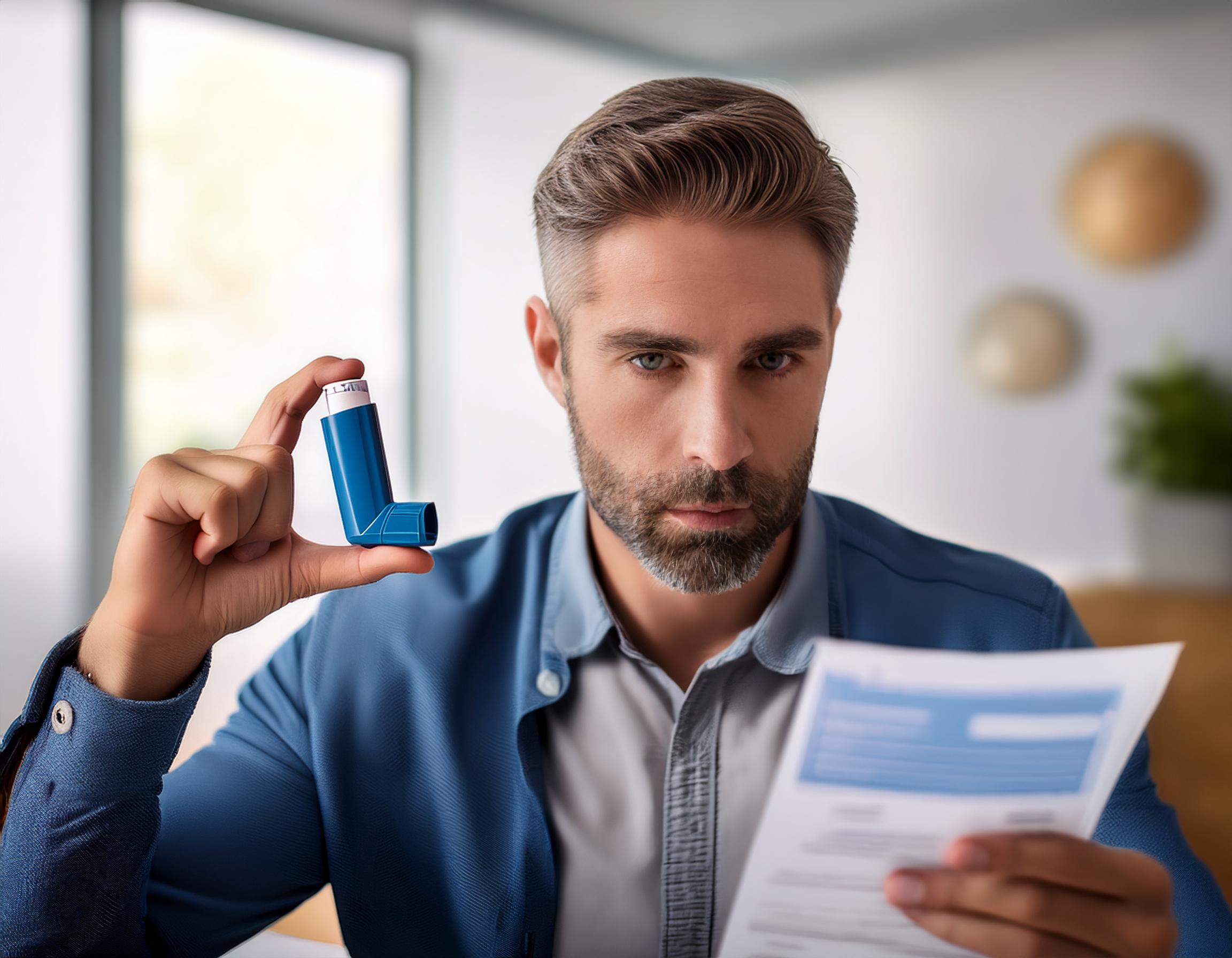
By Debbie Bunch
July 14, 2025
Biologics for Severe Asthma: A Chink in the Armor?
Biologics have been a godsend for many people with severe asthma, but once the drugs are tapered off or discontinued, asthma can return. Swedish researchers believe they know why.
In a study published in Allergy, researchers analyzed blood samples from 40 patients before and after they were treated with biologics, such as mepolizumab and dupilumab, for their severe asthma. The investigators employed advanced techniques, including flow cytometry and single-cell sequencing, to characterize the properties and functions of the participants’ immune cells.
They expected to see that immune cells that overreact and cause severe asthma would disappear during treatment, but instead found that certain types of these immune cells increased, suggesting biologics treat the symptoms of severe asthma without tackling the underlying problem.
“We were surprised to find that blood levels of inflammatory cells increased rather than decreased,” said study author Lorenz Wirth. “This could explain why inflammation of the airways often returns when the treatment is tapered or discontinued. It is important that we understand the long-term immunological effects of these drugs.”
The researchers now plan to analyze blood samples from patients with a long treatment history and study lung tissue to investigate how immune cells are affected in the airways. Read Press Release Read Full Paper

Women Now Outpace Men When It Comes to COPD
COPD has historically been thought of as a condition that affects men more than women. Not so, these days. According to U.S. investigators publishing in BMJ Open Respiratory Research, women age 40 and older now have a 50% greater risk of developing the disease than men of the same age.
The study was based on cross-sectional data from the 2020 National Health Interview Survey, which included data on 12,638 women and 10,390 men aged 40 and older. About an equal number of participants fell into the groups aged 40 to 49, 50 to 59, and 60 to 69, with fewer in the groups aged 70 to 79 and 80 years or older.
Key findings from the study include:
- Women had a higher COPD prevalence (7.8%) than men (6.5%) despite lower cigarette smoke exposure.
- Among respondents with COPD, 26.4% of women reported never smoking vs. 14.3% of men.
- Women with COPD who reported a history of smoking smoked a mean of 17.6 cigarettes per day vs. 21.7 for men and had a lower pack-year exposure and were less likely to have started smoking before age 15.
- The only tobacco products used more often by women with COPD than men were e-cigarettes, 26.5% vs. 19.7%.
- COPD prevalence was almost twice as high among women who had never smoked cigarettes as it was among men who had never smoked cigarettes. Prevalence was also increased among women who had ever smoked compared with men who had ever smoked.
The authors believe their study “raises uncertainty about the common assumption that increased vulnerability to cigarette smoke is driving the gender divide in COPD.” They call for additional research to better understand the factors leading to the high rate of COPD in women and how those factors can be addressed. Read Press Release Read Full Paper

OSA Burden in the U.S. Military Leads to More PTSD, TBI
In the largest and most comprehensive analysis to date to examine the burden of obstructive sleep apnea (OSA) among U.S. military personnel, researchers from the University of Maryland School of Medicine and the Uniformed Services University have found that soldiers with OSA are four times more likely than their peers without OSA to experience post-traumatic stress disorder (PTSD) and three times more likely to suffer a traumatic brain injury (TBI).
The study compared PTSD, TBI, and other outcomes among service members aged 17-64 from the Military Health System data repository who did and did not have OSA. Each group included nearly 60,000 individuals.
During the 12 months following a diagnosis of OSA, individuals with the condition made an additional 170,511 outpatient visits to their physicians compared to those without OSA, as well as an additional 1,852 emergency department visits and 66 hospitalizations.
In addition to experiencing PTSD and TBI more often, service members with OSA had 3.4 times more anxiety, 3 times more depression, and 1.7 times more musculoskeletal injuries.
“This study is a wake-up call,” said Col. Vincent F. Capaldi, II, ScM, MD, chair of psychiatry at the Uniformed Services University. “Sleep apnea is not just a medical condition — it’s a force readiness issue. We must prioritize sleep health as a cornerstone of operational performance and long-term wellbeing for the force.”
Researchers at the Uniformed Services University plan to collaborate with those from the University of Maryland on a new study, “Tele-Sleep OSA,” which aims to assess both the clinical effectiveness and cost-effectiveness of telehealth visits for military beneficiaries diagnosed with OSA.
CHEST published the study. Read Press Release Read Full Paper








